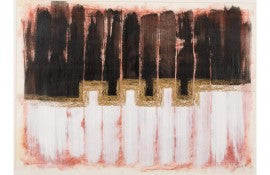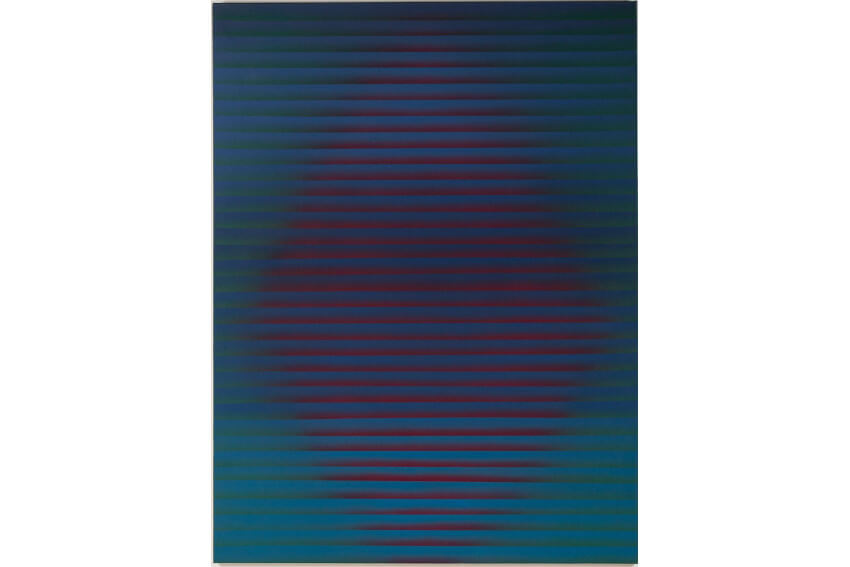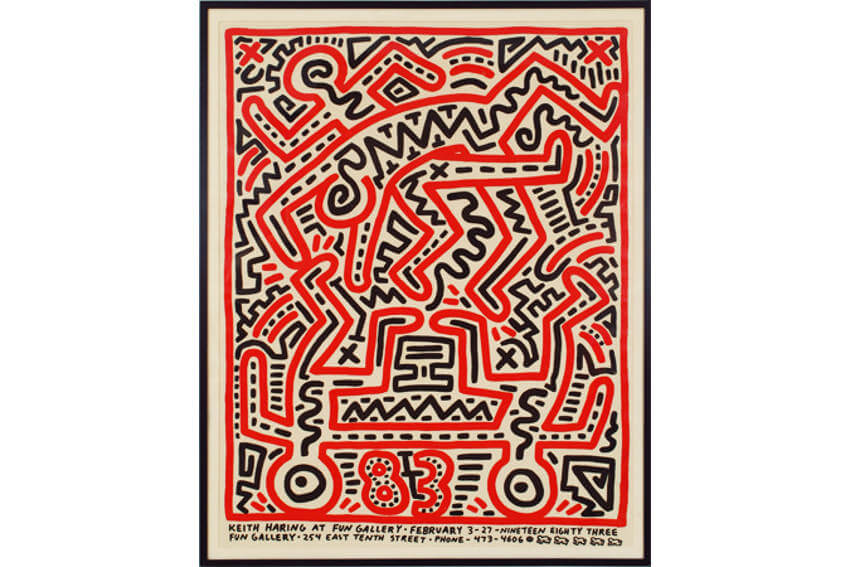
A Brief Look at the East Village Art Scene of the 1980s
The East Village art scene of the 1980s is the stuff of legends. Bordered by 14th Street, Houston, Bowery and Third Streets, and the East River, the neighborhood began its modern existence as a destination for poor, working class New Yorkers, mostly European immigrants. Largely for that same reason, Beatniks began moving to the area in the 1950s looking for cheap rent. Then came writers, musicians, artists and the inevitable various industries—legitimate and not—that revolve around the creative class. Eventually, the neighborhood completely transformed. Now it is home to dozens of art galleries. But the scene is nothing like it was 40 years ago, when the East Village was simultaneously considered the scuzziest and hippest place on the planet. Today it is mostly safe and commercial, and just as expensive as any other part of Manhattan. What changed it was part creativity and part commercialism. But mostly the rise and fall of the East Village art scene is a story of a good thing corrupted by its own success.
East Village Was the New SoHo
When art becomes a scene, everything changes: galleries move in, artists sign contracts, collectors show up in limousines, reporters cover shows, fashion gets noticed, opportunities multiply, and everyone get rich. That happened in the East Village in the 1980s. But art had already been part of the everyday life of the neighborhood long before that. The underground magazine East Village Other, where artists like Robert Crumb got their start, was founded in the neighborhood in 1965. In 1966, Andy Warhol converted the Polish National Home at 19-25 St. Marks Place into a club—the Velvet Underground was the house band. Two years later, promoter Bill Graham rented another neighborhood theater and started booking relative unknowns like Jimmy Hendricks, Pink Floyd and Led Zeppelin. CBGB opened on Bowery and First Street in 1973. Then in 1979, the East Village Eye, the paper that first published the word “hip-hop,” debuted.
Looking back, the East Village of the 60s and 70s seems amazing in so many ways. But it was also kind of a rat hole. The population was extremely poor and the streets were run down, rife with prostitutes, drug dealers, crime and desperation in all forms. It was where artists lived, it was not where they exhibited. Most galleries at the time were in SoHo. But just a generation before, in the 1960s, SoHo had also been a dilapidated mess. Artists and galleries flooded there for the large spaces and cheap rents. Then rents started rising. By the time Ronald Reagan was elected president in 1980 and the recession ended, the New York real estate market boomed and SoHo became downright unaffordable. It became clear to art dealers that if they wanted to do anything new and interesting in New York they would have to go somewhere else.
 Roy Colmer - Untitled (Reflections on a Car Hood), Acrylic on canvas, 1968, photo via igavelauctions.com
Roy Colmer - Untitled (Reflections on a Car Hood), Acrylic on canvas, 1968, photo via igavelauctions.com
Time For FUN
East Village became the new SoHo in 1981, when Patti Astor opened up what is widely regarded as the first art gallery in the neighborhood. Astor was a close friend and frequent collaborator with several of the hottest underground rappers, punk rockers, graffiti artists and filmmakers in the city. She chose a run down, East Village tenement building as the site for her new, experimental exhibition space: FUN Gallery. There, she helped jump start the careers of street artists like Lady Pink and Futura 2000, and gave major early shows to Jean-Michel Basquiat and Keith Haring. FUN Gallery started an East Village land rush. Galleries popped up weekly. Within a few years, the neighborhood was the epicenter of art movements as aesthetically diverse as Neo-Expressionism, Neo-Pop and Street Art.
The enormous piles of cash rolling in created a cycle of investment that raised rents higher and brought new development to the area. That created a division amongst local residents. Most were still extremely poor. Landlords stopped maintaining properties in hopes residents would leave their rent-controlled apartments. One newspaper clipping from this time reports that the entire back wall of a mid-rise apartment building in the area collapsed from neglect. Meanwhile, the neighborhood was also the center of the New York AIDS epidemic. Basically, East Village was the epitome of Reagan-era America: money, celebrity, drugs, and death surrounded by regular people just struggling to survive.
 Keith Haring - Untitled (Fun Gallery Exhibition), 1983, Offset lithograph, 29 × 23 in, 73.7 × 58.4 cm, Artificial Gallery, London, © Keith Haring
Keith Haring - Untitled (Fun Gallery Exhibition), 1983, Offset lithograph, 29 × 23 in, 73.7 × 58.4 cm, Artificial Gallery, London, © Keith Haring
End of an Era
By 1985, FUN Gallery closed due to declining market interest in street art. The East Village Eye published its last issue in January, 1987. A short while later it became apparent that well-known local resident Joel Rifkin had been strangling prostitutes to death in his truck for years in the neighborhood while everybody else was doing cocaine and getting famous. By the mid-1990s, the area had completely transformed, just in time to become immortalized in the Broadway play Rent as an area where struggling creative types live, love and die while trying to make it in the city that never sleeps.
Today, the one sentiment shared by everyone who lived in the East Village in the heydays of the 1980s is that for better or worse the neighborhood is nothing like it used to be. That perspective was summed up by the writer Gary Indiana in a 2004 article in New York Magazine. Indiana lived in an apartment above the FUN Gallery when it opened. He still lives there now. About the evolution of his beloved neighborhood, he said, “There was plenty of life in the place before anyone thought to squeeze cash from it. I still live in the East Village, but now I live in a luxury neighborhood, thanks mostly to an insignificant hiccup in the long burp of art history that created a seismic shift in the history of New York property values. (You knew it was all finished when the methadone clinic moved out.) … being able to get a deli delivery at four in the morning is among many happy improvements that hiccup left in its echoing wake."
Featured image: James Wang - Study for Golden Dragon, Conte Crayon, Mixed Media on Paper, 1986, Conte Crayon, Acrylic, and Pastel on Paper, photo via igavelauctions.com
All images used for illustrative purposes only
By Phillip Barcio






